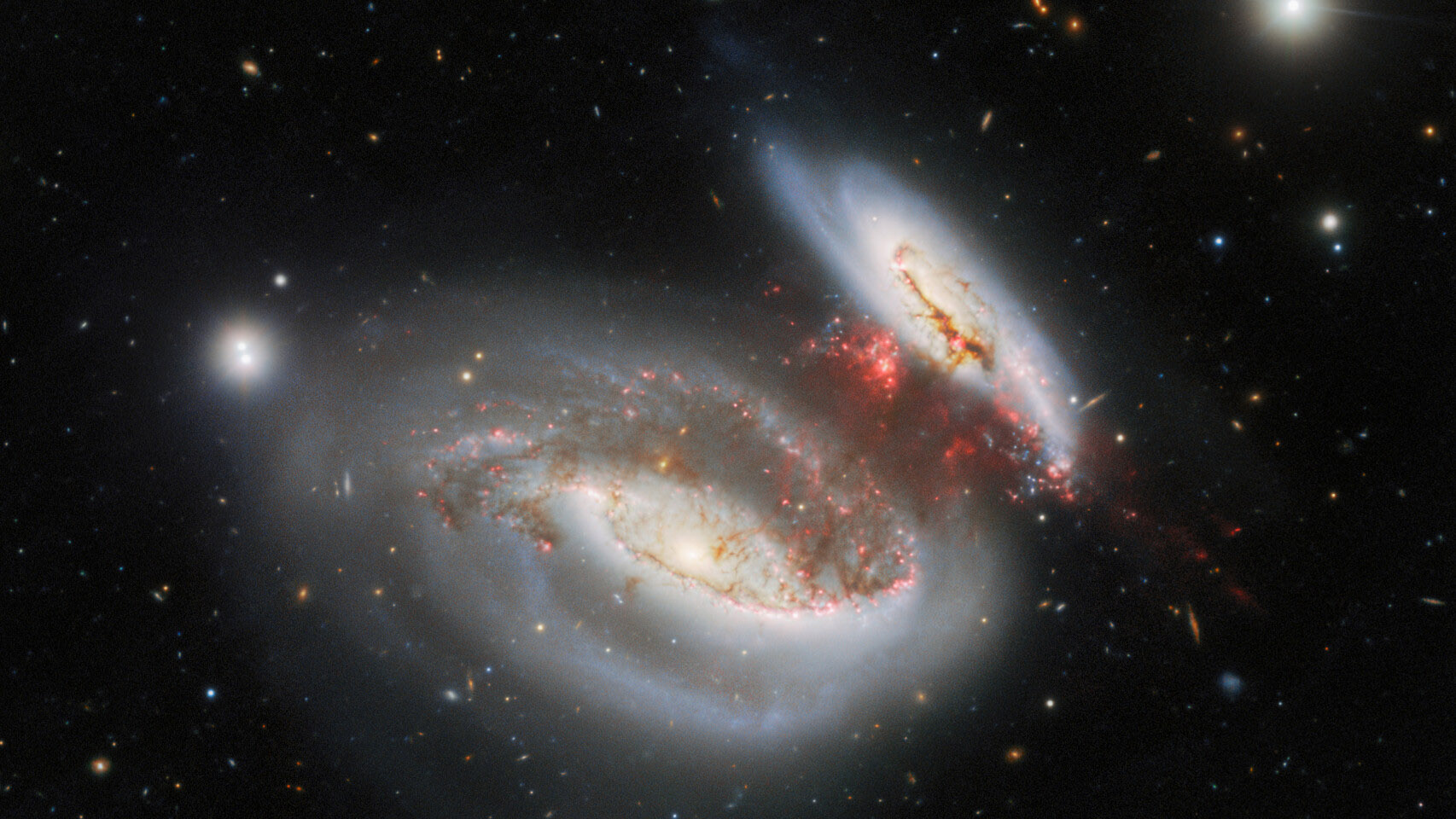
The violent head-on-collision of two galaxies some 180 million light-years away from Earth appears to one of the world's most powerful telescopes like a deceptively serene cosmic butterfly flapping its wings, or a giant piece of candy
The colliding galaxies, officially called UGC 12914 and UGC 12915, are nicknamed the "Taffy Galaxies" after the famous brand of sweets that their shape resembles. This twisted and stretched shape is a result of the collision which began around 25 million years prior to the scene playing out in the image. The image shows the results created as these galaxies recover from their head-on smash and now draw away from each other.
The picture of the colliding galaxies, located in the direction of the constellation Pegasus, was captured by the Gemini North telescope in Hawaii, which is, together with its Chile-based counterpart Gemini South, one of the world's largest and most advanced telescopes detecting optical and infrared light.
Related: The Hubble Space Telescope spots three galaxies about to collide

Collisions of galaxies such as this are deeply transformative events and drive the evolution of the universe, both triggering star formation and halting it. The mixing of stellar material from two galaxies via collisions can birth giant molecular clouds of gas and dust that become sites of intense star formation. But, as this stunning image shows, these collisions can also create regions in which stellar birth is curtailed.
While star formation continues in the wings of this vast cosmic butterfly, which are made up of the two Taffy galaxies, the story is different in the red-hued body and tail of the butterfly. This body is composed of a vast bridge of material stretching between UGC 12914 and UGC 12915 that is highly turbulent in nature. Although this intergalactic bridge joining the galaxies is replete with the building blocks for star formation, the birth of stars is stopped by violent churning and heating.
As the Gemini North image shows, the region is made up of strands of red and brown — hydrogen clumps and molecular gas filaments — that stretch as the galaxies separate after their head-on collision. This creates the impression of a warm taffy being pulled apart.
Galaxies collide in a variety of ways
Collisions between galaxies can happen in several different ways with varying results. Sometimes the spiral arms of larger galaxies are dragged toward smaller satellite galaxies eventually triggering a collision. Small galaxies can also collide with larger galaxies when their orbits intersect with the larger galaxy's main body, causing significant distortions to both galaxies' own structures.
If both colliding galaxies lack the momentum to carry them away from the merger, they will mix and merge. As the clouds of gas in those galaxies interact, the gas can get compressed into dense patches thus triggering star formation.
Head-on collisions like the one seen between UGC 12914 and UGC 12915 in this image are different. Rather than two "puddles" gradually leaking into one another, head-on collisions are more like two cups of water being dashed into the same bowl.
For the Taffy Galaxies, this meant the galactic disks and gaseous components of both galaxies violently smashed right into each other, causing a massive injection of energy into the gas making it highly turbulent.
As UGC 12914 and UGC 12915 recovered from this collision and drew away from each other, high-velocity gas was pulled from each galaxy. This created a massive gas bridge between them with the turbulence of the stellar material throughout this bridge now prohibiting the clumping and compression of gas into dense patches that are needed to birth new stars.
Follow us on Twitter @Spacedotcom or on Facebook.







